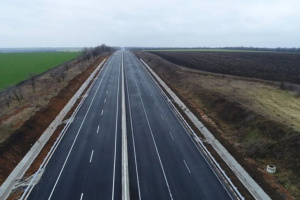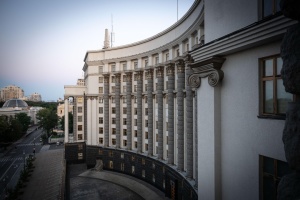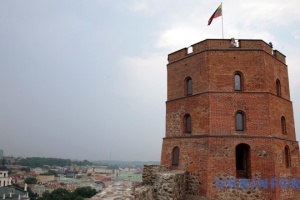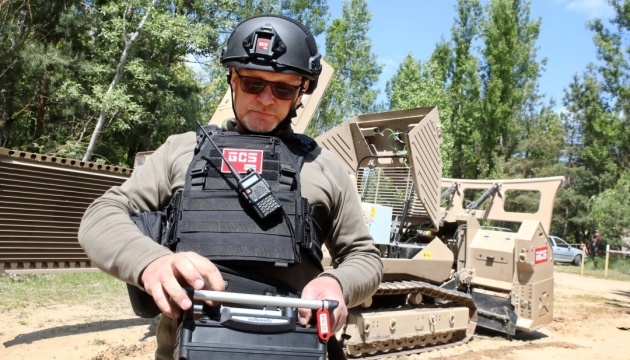
Clear of mines: how sappers prepare the site for the construction of a hospital
Since the beginning of April, sappers have been inspecting 5 hectares of land in the recreational area of Kyiv region for possible explosive objects. The goal is to remove this area from the list of mined territories by the end of May and hand it over to contractors for the construction of a modular hospital on the basis of a mental health center, which will specialize in the rehabilitation of our defenders.
In 2022, Russian occupiers stayed here in the Bucha community for 35 days. Remnants of rockets for Grad systems were found nearby. So, inspecting the territory was definitely necessary.
The journalists of Ukrinform spoke to people involved in demining. We also observed the operation of the innovative GCS-200 mine-clearing machine, which is the first to enter potentially dangerous areas and is capable of safely disarming mines.
AFTER THE SECOND WORLD WAR, EUROPE WAS BEING CLEARED OF MINES FOR 15 YEARS
According to the State Emergency Service of Ukraine, as of May 17, since the beginning of the large-scale invasion by the Russian Federation, 494,875 explosive objects and 2,950 kg of explosive material, including 3,537 aviation bombs, have been neutralized. The area of over 132,620 hectares has been surveyed. However, about a quarter of Ukrainian lands are still contaminated with mines and explosive objects... The most heavily mined areas are the previously occupied regions. Stabilization measures everywhere that was temporarily occupied by the enemy Russian forces begin with demining.
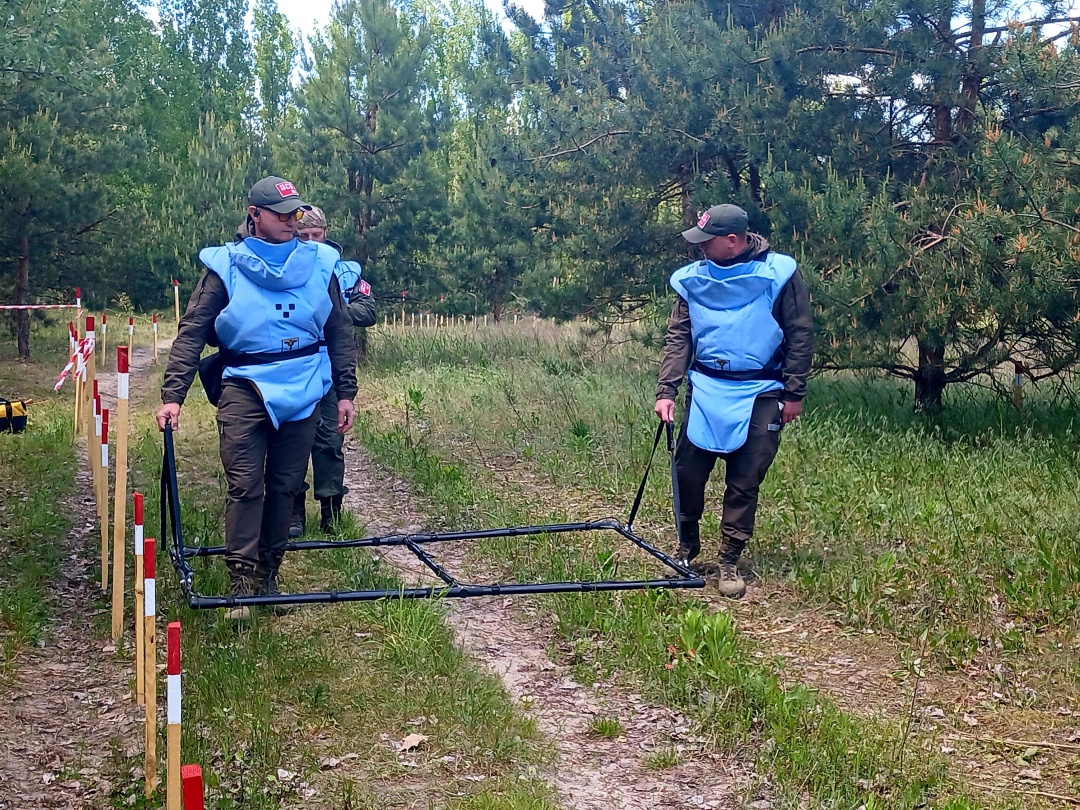
Safe clearance of territories from explosive objects is a task requiring a lot of time and resources. Yet last year, the United Nations stated that a demining operation similar to the clearance of Europe from explosive materials after World War II would be needed to demine Ukraine as a result of the Russian invasion. The Straits Times reported this, citing Paul Heslop, Manager for Mine Action Service of the UN Development Programme, "What we really need from the international community... is a commitment of approximately 200 to 300 million US dollars per year for the next five years." It took Europe 15 years to solve the similar problem in the 20th century.
According to the Law "On Mine Action in Ukraine," operators of such activities can be both authorized units of central executive authorities (State Emergency Service, National Police of Ukraine, Ministry of Defense, and State Special Transport Service — a specialized military formation that is part of the Ministry of Defense of Ukraine) and enterprises, institutions, and organizations of various forms of ownership, including international and foreign ones.
The clearing of the territory in the Kyiv region, which was visited by journalists, is being carried out by one of the full-cycle companies — Global Clearance Solutions Ukraine. The company not only organizes and supports the work of certified demining teams, but also provides them with specialized automated GCS machines. The works for the Bucha City Council is preformed free of charge — in this way, the company contributes its resources, efforts, and skills to the restoration of Ukraine.
UKRAINE NEEDS HUNDREDS OF UNITS OF DEMINING EQUIPMENT
Mine-clearing equipment is a very niche market. However, it is in demand due to the significant number of military conflicts worldwide over the last decades that required clearance of explosive items. Specifically, in Iraq, Saudi Arabia, Ireland, Azerbaijan, countries in Africa and South America, and in the last decade — in Ukraine.
Currently, there are up to ten prominent manufacturers of demining equipment, which differ primarily in their intended use. In military operations, armored engineering vehicles like Wisent 1, developed on the basis of the Leopard 2 tank chassis, save the lives of defenders. Israel also has its own high-tech developments. In 2019, Turkey decided to put an end to its dependence on foreign means in this industry and safely demine its lands.
The Ukrainian company A3tech, which is expanding its capabilities, is carrying out the assembly and localization of Croatian DOK-ING machines. For the safety of our fields, Efarm.pro offers to provide in a month's time a special-purposes tractor "People's Deminer", which was developed together with the leading agricultural machinery enterprise "Kobzarenko Plant".
So, in the market of demining equipment, which Ukraine cannot do without during the eleventh year of the Russian-Ukrainian war, figuratively speaking, both "Mercedes" and "Zaporozhets" are represented. And each model can be applied in its own area to secure the lives of people on the front line and in the formerly occupied territories, as well as gradually return agricultural land and forests to use.
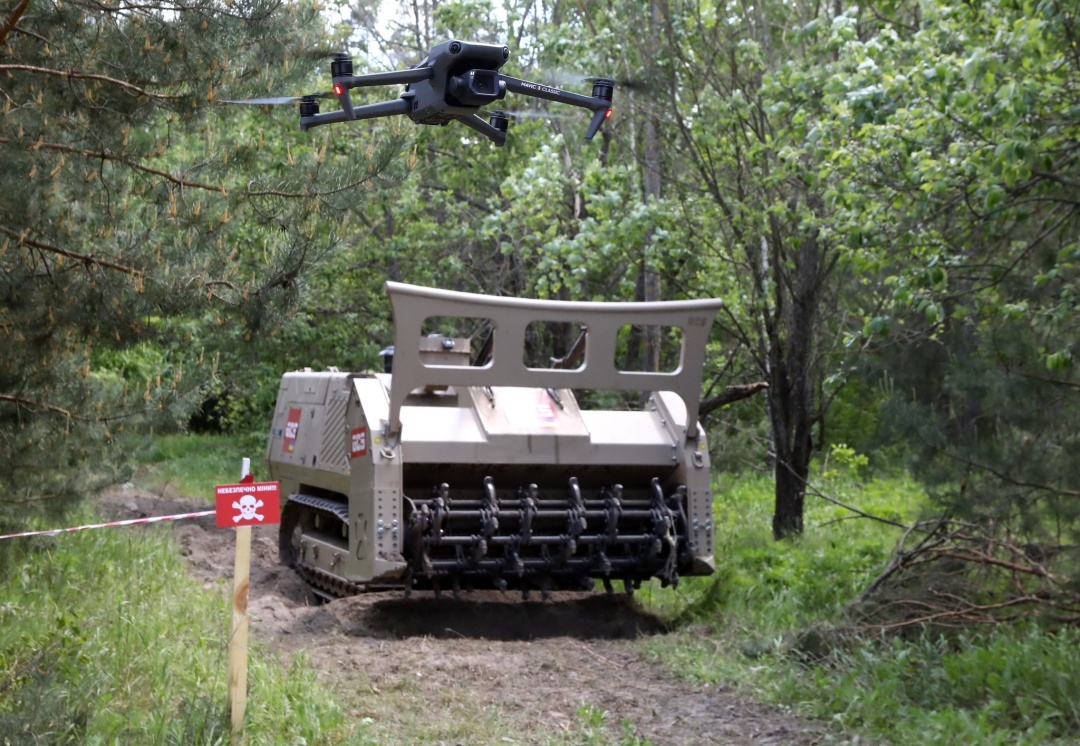
The innovative GCS-200 machine is manufactured by a Swiss company in Germany, in the town of Stockach. It can be controlled by the operator via a remote control at a distance of 1 km. The drone reads the information and transmits it to the operator. The machine is equipped with several cameras that can scan the area. The surface where explosive items may be located is being disrupted by special "hammers." There are special buckets that pick up deadly findings and remnants if they have exploded under a vehicle.
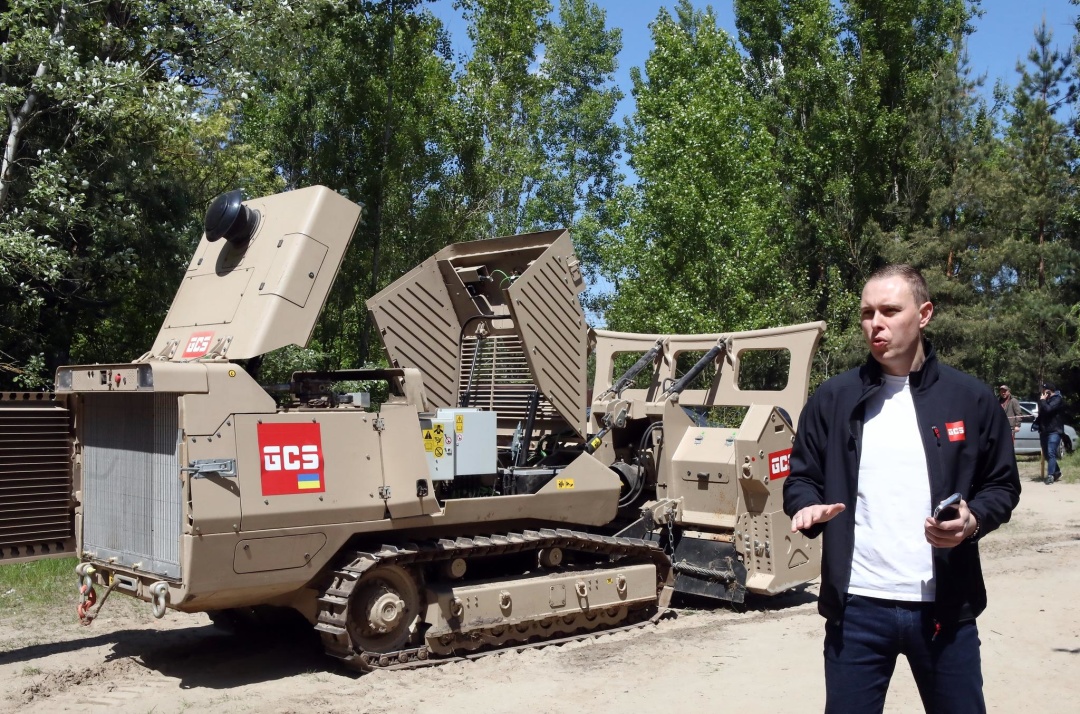
Today, there are 34 GCS-200 machines in operation in Ukraine, says Dmytro Salimonov, director of Global Clearing Solutions, Ukraine. They are used for demining territories by the State Emergency Service of Ukraine, the National Police, and the Ministry of Defense in the Kherson, Zaporizhia, Kharkiv and Donetsk regions — wherever it is feasible. For example, a large agricultural holding company bought four of these mine-clearing machines for its needs.
Global Clearance Solutions estimates that 300 of these demining vehicles are needed for Ukraine's needs when the war is yet to be over. Incidentally, on May 13 in Germany, the CEO and Co-founder of GCS company Philipp von Michaelis handed over the first of four remotely controlled demining machines with mounted equipment to Ukraine, provided by Hamburg. The decision of the senate of this German city to support the efforts of our country to get rid of explosive objects is backed by approximately 10 million euros. The program is partially funded by donations from the local population. Ambassador of Ukraine to Germany Oleksii Makeiev thanked Hamburg and the Ministry of Internal Affairs of Germany "for a clear understanding of the importance of preserving Ukrainian land for all further processes of normalizing life in Ukraine." The machine will be available to the National Police of Ukraine in June. Three more GCS-200s purchased by Hamburg will arrive starting from August.
SAPPERS ARE CHECKING THE SITE FOR THE CONSTRUCTION OF A HOSPITAL
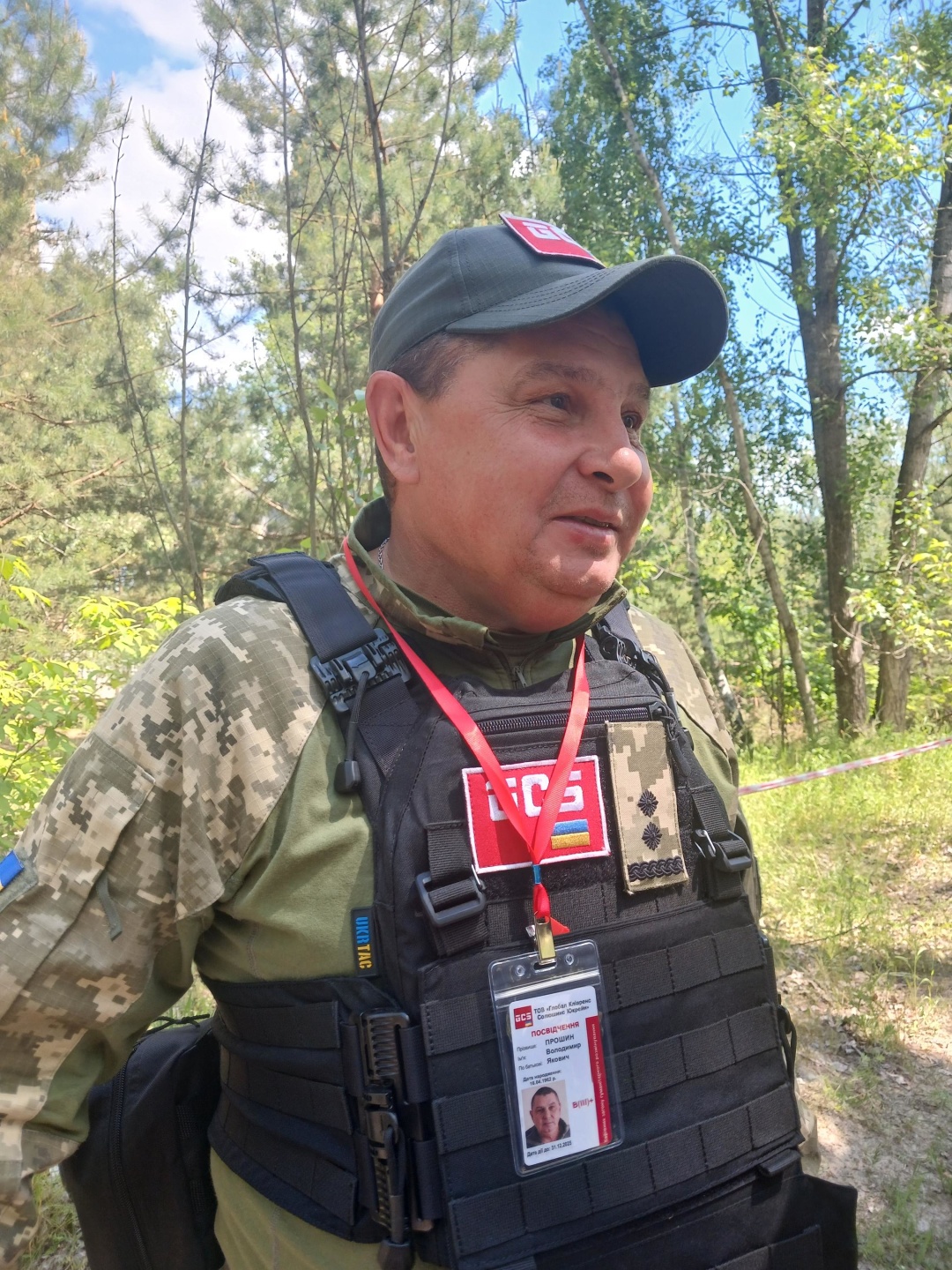
"The first rule of safety is not to touch anything and not to go beyond the boundary lines," warns Lieutenant Colonel Volodymyr Proshyn, commander of the demining unit, when we enter the territory that is still listed in the register of explosive areas.
"We were certified only in January, and we are currently performing our first task," says the interlocutor, who has a dozen and a half people under his command. "Each type of humanitarian demining requires a separate certification: for informing, technical survey, manual and mechanized demining."
It is only at this place of work that Lieutenant Colonel Proshyn is considered "young." His experience as a sapper began during the war in Afghanistan. In the second half of the 1990s, as a commander of a sapper battalion, he was engaged in the disposal of shells from the First World War in Ukraine, pulling them out of the mud. Therefore, he knows well that the echoes of past wars can still haunt people on peaceful territories many, many years later.
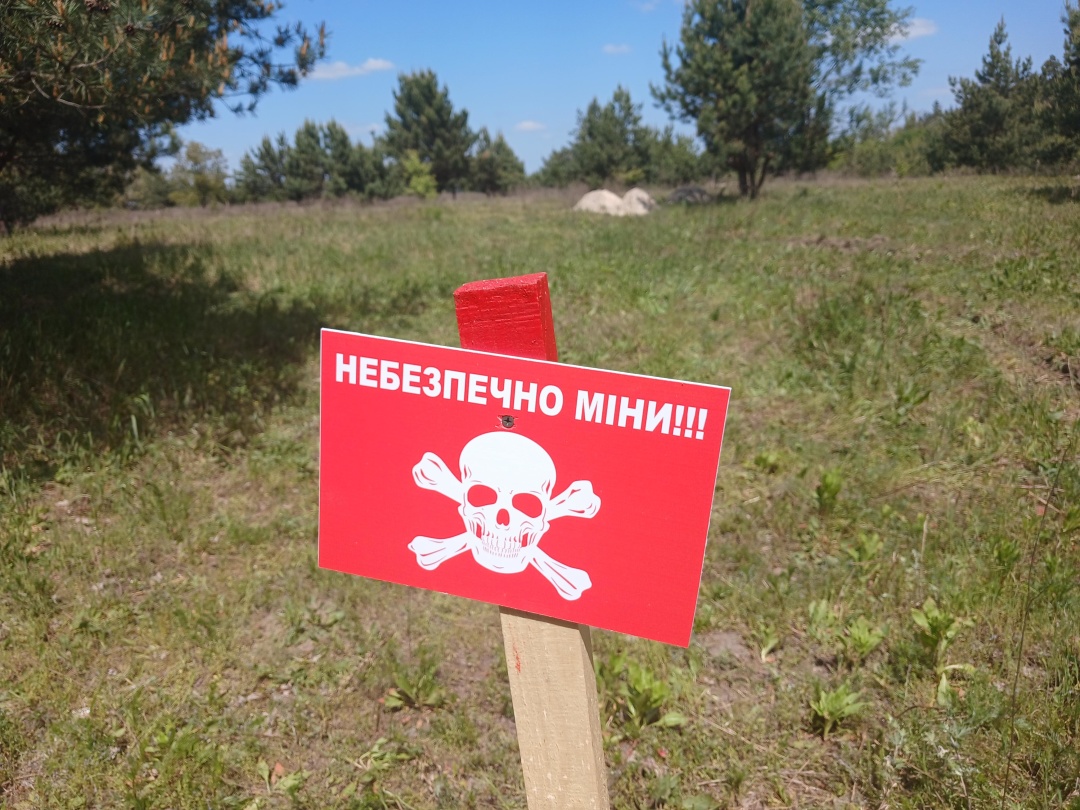
"For your personal safety, please do not enter!" — this was the first message we read on the banner with the title "Humanitarian Demining". On the territory where a rehabilitation hospital for Ukrainian defenders is to be built in Kyiv region, there are still warning signs "Danger of mines!!!" and clearly marked walkways with white and red ribbons.
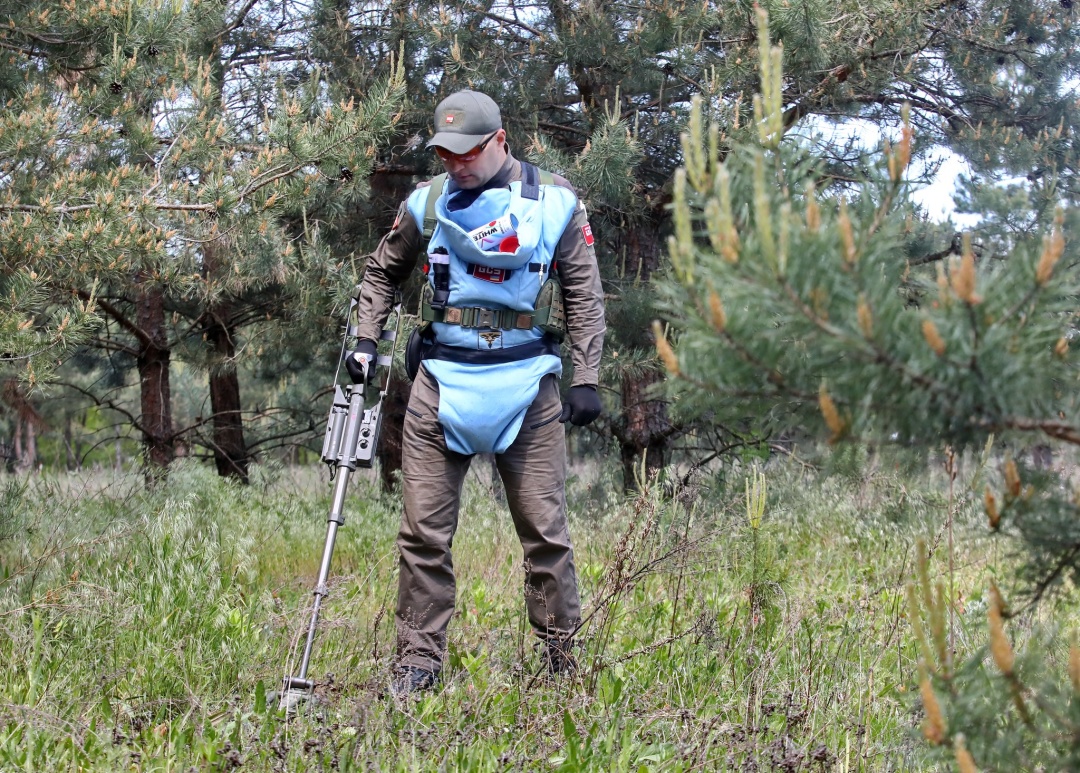
Sappers wear protective gear in case of an unexpected explosion. Fortunately, nothing like that happened.
We are talking to a team that works with mine detectors familiar to many from the movies — with a long handle and a large area frame held by four sappers.
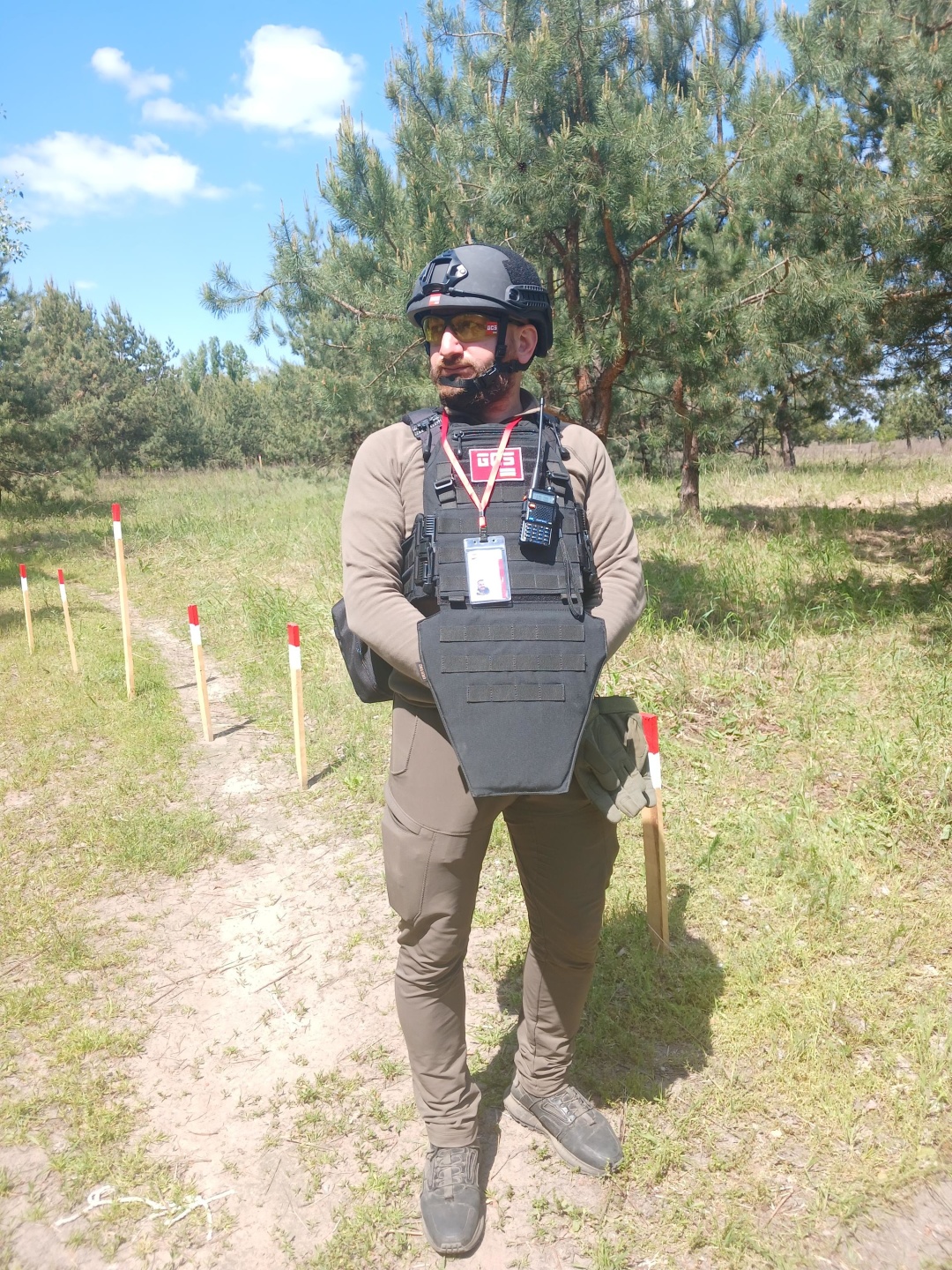
The Head of the Department is Vasyl Vasylevych. 7 sappers, 2 operators, one paramedic, and a driver are under his command. He has experience as a voluntary soldier in the 3rd Separate Assault Brigade. He trained as a sapper and underwent preparation to work with the UR-83P (УР-83П) demining installation (on a tracked chassis, it creates a passage in a minefield at a distance of 450 m and a width of 6 m). He was a platoon commander, holding the rank of Senior sergeant. Vasyl reminds us that the work of sappers does not tolerate haste in any conditions.
The operator of the demining machine, Oleksandr Vorontsov, is from Mykolaiv, he has been working as a sapper for six months. He used to be the captain of a private boat. As of February 26, 2022, he prepared his floating craft in case the bridges were blown up. For nine months, he literally lived on water in order to be able to evacuate civilians and military personnel. Then he worked for some time as a cameraman for Reuters, and it was while filming that he became interested in the work of sappers, in particular, in the issues of demining of water areas.
Oleksandr completed a two-month training at the Center for Humanitarian Demining and Rapid Response of the State Emergency Service, and received a specialization of "Demining sapper." For two more months, he mastered specialized knowledge at GCS. Now he works at the control panel of an innovative demining machine.
By the way, according to the rules, when performing the task, the operator should not be less than 100 meters away from the machine. Remote control is an advantage to ensure safety, but it is also a challenge when you cannot see the situation with your own eyes. However, the drone and the operator who controls it help.
Let's talk to a sapper named Ruslan from the team, who has been involved in demining for almost a year. Ruslan says, "This work is important for everyone: our children, grandchildren, and great-grandchildren. I have completed the training and received a certificate. I want to protect everyone from danger."
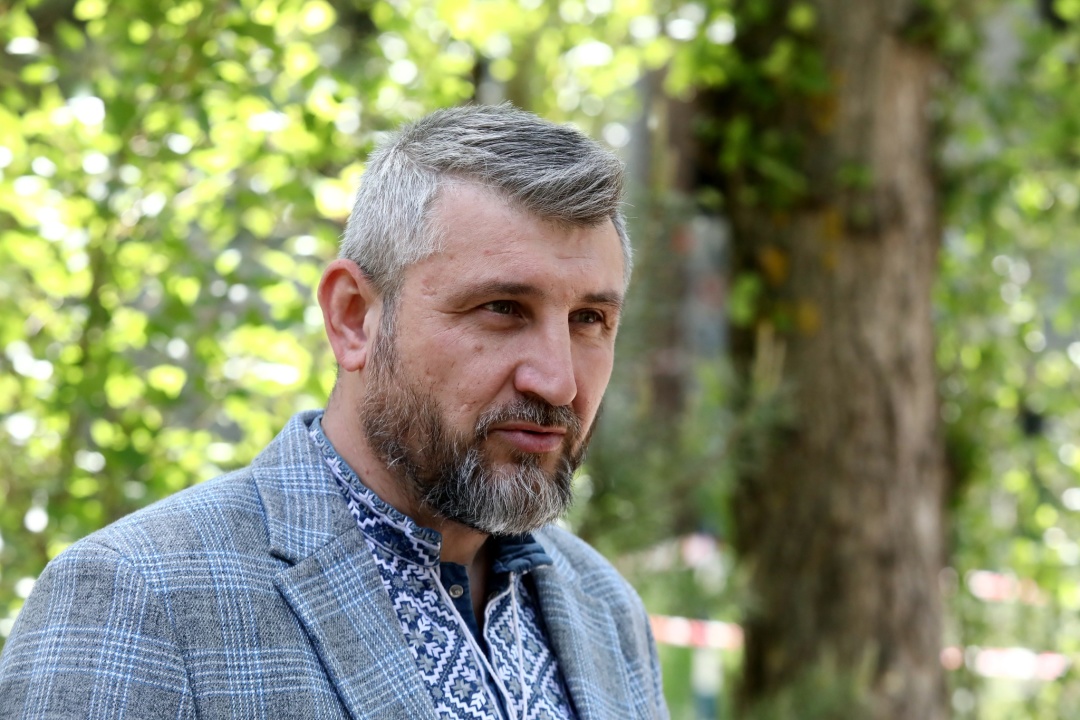
Dmytro Hapchenko, head of the affairs of the Bucha City Council, draws attention to the matter that requires a clean area - the construction of a modular hospital on the basis of the mental health center, which will specialize in the rehabilitation of our defenders. "We have to prepare the land plot so that the American side, which manufactures the modules for the construction, can bring them and install them," says the official. "It is important that this area is clean so that people can safely stay there and all construction work can begin."
Valentyna Samchenko, Kyiv region


